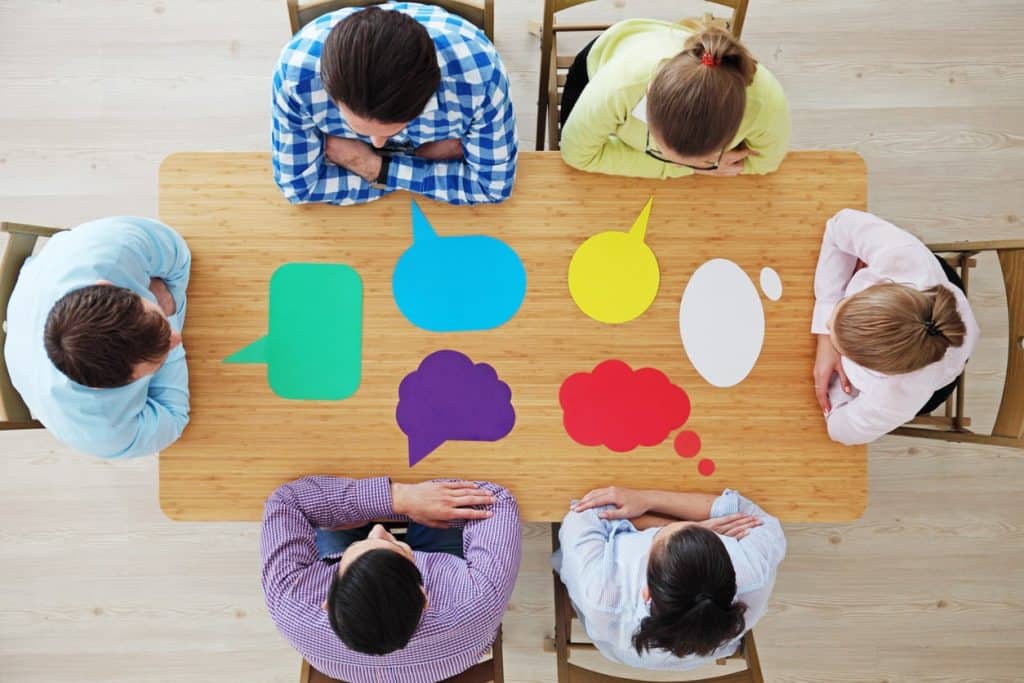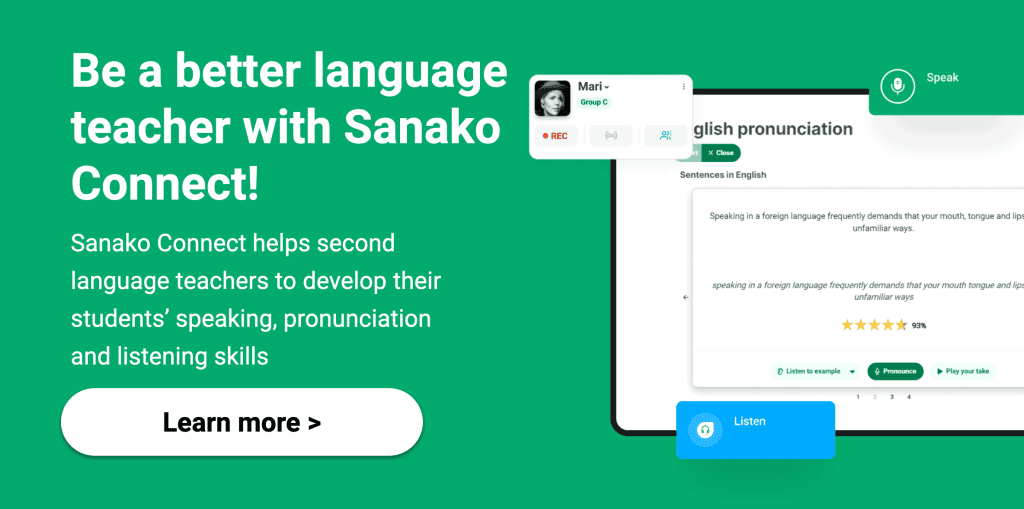Traditional language learning usually consists of building expertise in four key skills; listening, reading, speaking and writing. But as the nature of communication and literacy changes in a tsunami of digital channels and tools, it’s vital for language learning to keep pace.
Communication is now increasingly online as students access language content across YouTube videos, blogs, newsletters and social media posts. As such, they’re not just learning from words on a page, but from animations, videos, images and audio files.
Students therefore need to develop a new set of multimodal language skills to both understand others and to express themselves. This blog post will therefore look at multimodality and consider how language educators can help today’s students build and develop these core, new communication skills.
What is multimodality in languages?
The term “modes of communication” refers to the different channels or forms through which information is transmitted. As outlined below, each mode serves a different purpose and works in a different way.
In the context of language and multimodality, these 5 common modes extend beyond traditional written and spoken language to include different means of expression.
- Aural communication involves the use of sound to convey messages. It encompasses music, the spoken word and other auditory elements that carry meaning.
- As the name suggests gestural communication involves the use of hand gestures, body movements and facial expressions to convey messages. It is commonly used in conjunction with verbal communication to emphasise points, illustrate concepts or to add additional meaning.
- The linguistic mode of communication refers to the use of language, both spoken and written, to convey meaning. It encompasses the use of words, grammar, sentence structure, and other linguistic elements to create coherent and meaningful messages. It serves as the foundation for other modes like visual, aural, and gestural communication.
- Spatial communication refers to the arrangement of elements in space to convey meaning. It includes the organisation of objects, their proximity to each other, and the use of negative space to create visual impact and guide the viewer’s eye. It is often employed in graphic design, web design, and art to create visually appealing and effective communication.
- The visual communication mode uses elements like images, graphics, symbols, and infographics to convey messages. It is often employed in advertising, marketing, and media, where visual appeal is crucial for capturing attention and conveying information effectively.
When a piece of content contains more than one of these modes it is considered to be multimodal. Multimodality therefore refers to the use of multiple modes of communication, such as written language, images, sound, and gesture, to create meaning.
In the context of language teaching, multimodality literacy is the ability to comprehend and produce content that combines these diverse modes. These skills are essential for effective communication in today’s digital landscape, where multimodal texts are prevalent in everyday situations, on social media and in professional settings.
Why is multimodality so important?
Incorporating multimodality and multimodal literacy into your language teaching is not just a pedagogical decision; it’s an essential response to the current needs of students in a digital and interconnected world. We identify five key reasons why building these skills should be a focus.
- Real-world language: Communication involves not only written words but also visuals, sounds, and gestures. By incorporating multimodal elements into language teaching, educators prepare students for the complexities of real-world language use, enhancing their ability to navigate and participate in diverse communication situations.
- Enhanced engagement and motivation: Introducing multimodality brings an element of excitement and variety to the classroom, making learning more engaging. When students can express themselves using different modes, they are more likely to feel motivated and invested in the language learning process.
- Critical thinking and analysis: Analysing multimodal texts requires students to develop critical thinking skills as they deconstruct and interpret information from various sources. This not only strengthens their language skills but also cultivates a deeper understanding of how different modes contribute to meaning.
- Preparation for digital communication: In the digital age, effective communication often involves the use of multimedia platforms. By integrating multimodality into language instruction, educators equip students with the skills needed to navigate digital communication tools and express themselves in a variety of formats.
- Creativity and expression: Multimodality opens up avenues for creative expression. Students can convey their ideas, thoughts, and emotions through a combination of text, images, sounds, and more. This not only enhances their language proficiency but also nurtures creativity and self-expression, fostering a positive and empowering learning experience.
Embedding multimodality in the language classroom
There are a wide variety of ways in which educators can support their students to develop multimodal literacy skills. We’ve identified six pedagogical strategies to inspire you below.
- Text analysis: Start by introducing multimodal texts into your classroom, such as videos, infographics or other multimedia content. Ask your students to analyse these texts, identifying the different communication modes used and considering how they contribute to the overall message. Students could then create visual representations, record audio reflections or even produce short videos to share their reflections.
- Collaborative projects: Ater putting your students into groups, assign them projects which aim to create multimodal presentations. This could include writing and maintaining a blog, recording a podcast or producing a short video.
- Digital storytelling: This approach can be a really powerful tool for multimodal expression. Teachers and students could use platforms like Sanako Connect, Storybird or Adobe Spark to create stories that blend text, images and narration. This not only enhances language proficiency but also encourages creativity and critical thinking.
- Time to reflect: Give students the opportunity to express themselves using different communication modes and formats. This could involve creating visual journals, recording audio reflections, or even using symbols and icons to represent their feelings about a particular topic.
- Language portfolios: Encourage students to create (and maintain) digital portfolios that showcase their language learning journey and skills. This could include written content, multimedia projects, audio recordings of spoken work as well as their reflections on learning a new language.
- Vocabulary journals: Instead of the traditional paper-based vocabulary list, try to get students to create multimodal vocabulary journals. Each entry could include the word, its definition, a visual representation, and a sentence using the word. This approach reinforces vocabulary in multiple contexts.
Language learning in the 21st century demands a new set of skills beyond traditional literacy. Multimodal literacy is the way forward and aligns closely with core 21st century skills by incorporating communication, collaboration, critical thinking and creativity. By focusing on these skills, language educators help prepare students for the demands of our digital-first, modern world.
How can Sanako help?
With customers in 114 countries and with our language teaching products in over 50,000 classrooms globally, Sanako has significant experience of improving students’ language skills.
We also know that there’s no easy or right way to deliver a language lesson. Every educator has their own unique approach to building key language skills. So it’s important that our products and solutions are highly flexible and can be used to support all languages and all language learners.
To build multimodal literacy, language teachers need to be able to access and upload a wide variety of learning material for students to use. Any number of PDFs, presentations, audio files, videos and web pages can, for example, be easily attached to an online lesson plan. This makes our product Sanako Connect the perfect platform to use, when sharing materials with students wherever they are learning.
In response, students could upload any of the following outputs to Connect to demonstrate their knowledge, multimodal skills and understanding.
|
Mode of communication |
Student output |
|
Aural |
Music, podcasts, speech recordings, live performances, sound effects, environmental sounds |
|
Gestural |
Recorded video examples of sign language, body language, facial expressions, hand gestures including dance and mime |
|
Linguistic |
Novels, essays, poems, scripts, songs, speeches, advertisements, instruction manuals, websites, emails, social media posts |
|
Spatial |
Graphic design, website layouts, stage design, product packaging, interior design, art installations |
|
Visual |
Images, photographs, paintings, diagrams, charts, infographics, videos, animations, emojis, emoticons |
Sanako is the global-leader in teacher-led language instruction technology. Our software supports language teachers to deliver inspiring and effective lessons. If you’d like to find out more about how Sanako’s dedicated language teaching software could transform your approach to language teaching, click here or the banner below to learn more!

